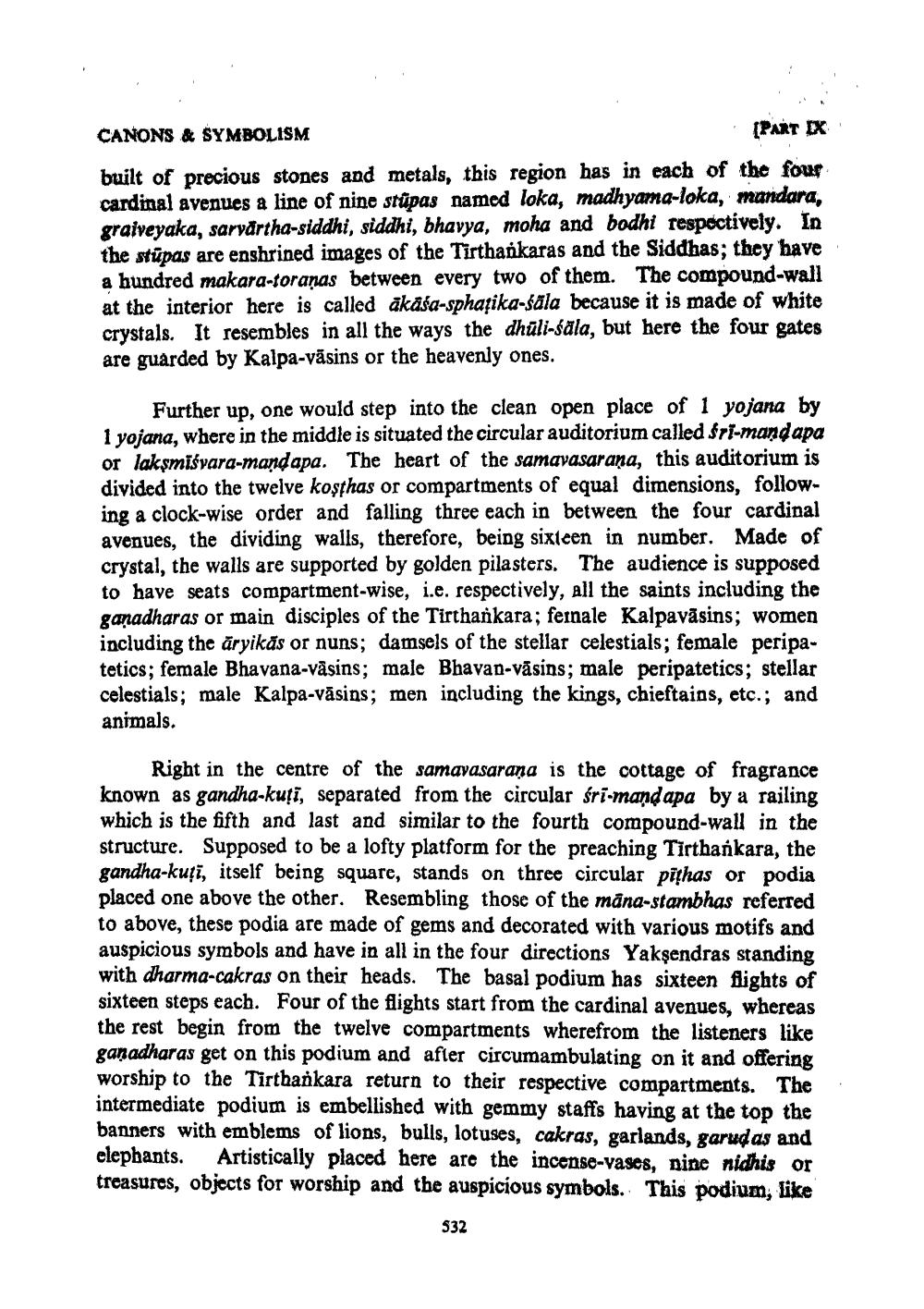________________
CANONS & SYMBOLISM
(PART IX built of precious stones and metals, this region has in each of the four cardinal avenues a line of nine stüpas named loka, madhyama-loka, mandara, graiveyaka, sarvärtha-siddhi, siddhi, bhavya, moha and bodhi respectively. In the stūpas are enshrined images of the Tirthankaras and the Siddhas; they have a hundred makara-toranas between every two of them. The compound-wall at the interior here is called akaśa-sphafika-sala because it is made of white crystals. It resembles in all the ways the dhūli-sala, but here the four gates are guarded by Kalpa-vāsins or the heavenly ones.
Further up, one would step into the clean open place of 1 yojana by 1 yojana, where in the middle is situated the circular auditorium called Sri-mand apa or laksmisvara-mand apa. The heart of the samavasarana, this auditorium is divided into the twelve koşthas or compartments of equal dimensions, following a clock-wise order and falling three each in between the four cardinal avenues, the dividing walls, therefore, being sixteen in number. Made of crystal, the walls are supported by golden pilasters. The audience is supposed to have seats compartment-wise, i.e. respectively, all the saints including the ganadharas or main disciples of the Tirthařkara; fernale Kalpavāsins; women including the aryikās or nuns; damsels of the stellar celestials; female peripatetics; female Bhavana-väsins; male Bhavan-vāsins; male peripatetics; stellar celestials; male Kalpa-vāsins; men including the kings, chieftains, etc.; and animals.
Right in the centre of the samavasarana is the cottage of fragrance known as gandha-kuți, separated from the circular śrī-mandapa by a railing which is the fifth and last and similar to the fourth compound-wall in the structure. Supposed to be a lofty platform for the preaching Tirthankara, the gandha-kuți, itself being square, stands on three circular pithas or podia placed one above the other. Resembling those of the mana-stambhas referred to above, these podia are made of gems and decorated with various motifs and auspicious symbols and have in all in the four directions Yakşendras standing with dharma-cakras on their heads. The basal podium has sixteen flights of sixteen steps each. Four of the flights start from the cardinal avenues, whereas the rest begin from the twelve compartments wherefrom the listeners like ganadharas get on this podium and after circumambulating on it and offering worship to the Tirthankara return to their respective compartments. The intermediate podium is embellished with gemmy staffs having at the top the banners with emblems of lions, bulls, lotuses, cakras, garlands, garud as and elephants. Artistically placed here are the incense-vases, nine nidhis or treasures, objects for worship and the auspicious symbols. This podium, like
532




